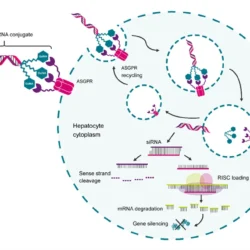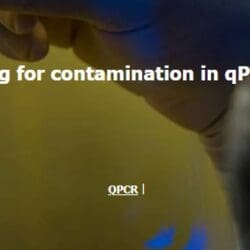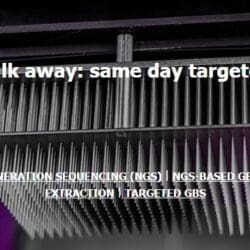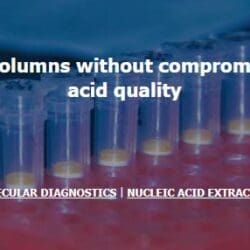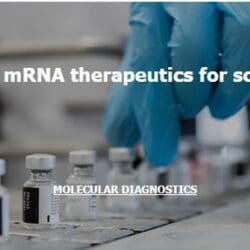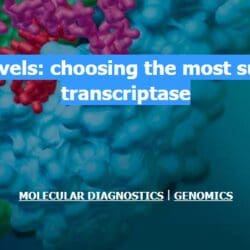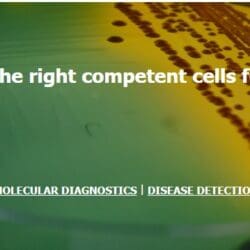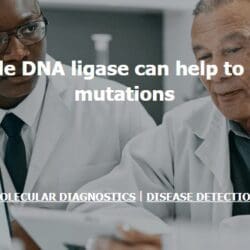Check out the latest news from Lucigen!
- Lucigen is a leading developer, manufacturer and supplier of molecular biology enzymes, reagents and kits.
- Lucigen has an extensive portfolio of life science products including NGS kits, enzymes, competent cells, and cloning systems, targeting fast growth applications in clinical diagnostics, drug discovery, synthetic biology and gene editing.
-
LUCIGEN | Nucleic Acid Therapeutics Toolbox: Givosiran, the first liver-targeted siRNA drug
The success of small interfering RNAs (siRNAs) therapeutics in treating rare genetic liver disorders has spurred significant investment to expand these drugs to more common conditions, from hypertension to hepatitis B.1 The growth in the field has only been possible thanks to alterations to the oligonucleotides that enhance siRNA stability and efficacy. These include nucleotide […]
Read More -
Lucigen | Controlling for contamination in qPCR testing
qPCR testing is usually the method of choice when high sensitivity and specificity are required. For instance, in diagnostic and forensic applications, qPCR allows the crucial detection of minute amounts of target material. While sensitivity is a significant advantage of qPCR this same trait also makes it vulnerable to contamination, leading to inaccurate results. In […]
Read More -
Lucigen | Set up and walk away: same day targeted genotyping
Accelerate breeding programmes with high-speed, high-throughput NGS workflows Designing molecular breeding programmes to screen for desirable traits in plants and livestock can accelerate breeding cycles and enable precise genotype selection. But processing thousands of samples — with potentially complex genomes or difficult sample types — to deliver results within critical breeding windows is a major […]
Read More -
Lucigen | Ditch the spin columns without compromising on nucleic acid quality
Whether you’re working with samples for PCR or sequencing, it’s worth questioning what type of extraction or purification method would work well with your downstream application. Are there potential time and cost efficiencies? Do you need ultra-pure nucleic acid, or will a simple crude prep do the job just as well? There are a few […]
Read More -
Lucigen | How to design mRNA therapeutics for scalable success
The recent Nobel Prize awarded to Katalin Karikó and Drew Weissman underlined the impact their breakthroughs in mRNA technology had in combating COVID-19. This new class of therapeutics is poised to have an increasingly important role in the future of healthcare. This blog post outlines some of the considerations for the design, production and purity […]
Read More -
Lucigen | How to select an effective nucleic acid isolation method for human diagnostics.
Molecular testing protocols for pathogen detection and diagnosing human diseases require reliable and high-quality isolation of genetic material from diverse sample types. There are many extraction and purification technologies available and choosing the right one for your needs requires some planning and evaluation. Before deciding which isolation method best suits your needs, you may wish […]
Read More -
Lucigen | Molecular marvels: choosing the most suitable reverse transcriptase
Image credit: HIV Reverse Transcriptase. RCSB Protein Data Bank. The Wellcome Collection. Reverse transcriptases (RTs) are enzymes that can generate complementary DNA (cDNA) from an RNA template. RTs are RNA-dependent DNA polymerases, which were initially discovered in retroviruses. They now have widespread applications in various molecular biology techniques used for biomedical research and molecular diagnostics. […]
Read More -
Lucigen | How to choose the right competent cells for phage display
Since Humira (adalimumab) became the first approved monoclonal antibody therapy developed using phage display in 2002, it has sold more than any other drug in history.1,2 Phage display is a technique that allows for screening astronomical numbers of proteins for potent binders, and it is now one of the most powerful ways of creating high-affinity […]
Read More -
Lucigen | How thermostable DNA ligase can help to detect rare point mutations
Detecting single nucleotide variations (SNVs) offers powerful actionable insights in diagnosing diseases, monitoring cancer progression and identifying pathogen variants. However, reliably spotting these minor changes in rare cell populations is technically challenging due to the required sensitivity and specificity. As a result, the lack of affordable, simple and highly specific techniques is limiting the ability […]
Read More

